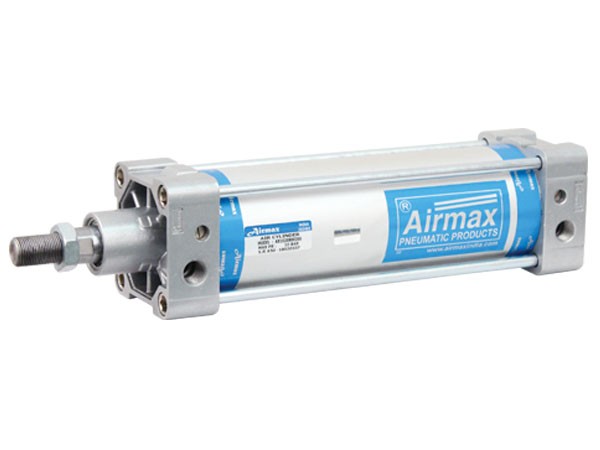Know Your Pneumatics: Single or Double Acting?Select Wisely

Typically, pneumatic actuators consist of a piston and rod moving inside a closed cylinder, designed to provide linear motion in a straight line. Linear actuators are use in a wide variety of industries, including factory automation, packaging, transportation, and life science.
Typically, linear actuators are either single-acting or double-acting, depending on the operating principle. We will discuss these variations, typical applications, and advantages and disadvantages.
Single-acting cylinders
In a single-acting cylinder, the thrust is develop only in one direction.
It is return by a fitt spring or by some other external force such as weight, mechanical movement, gravity, or an external spring. The piston moves to the desire position to compress air entering the cylinder through a single port.
A single-acting cylinder can divide into two types:
- In a push type, air pressure produces a thrust, pushing the piston.
- An application of air pressure produces a thrust, causing the piston to be ‘pulled’.
Typically, single-acting cylinders are use for clamping, positioning, marking, stroking, and light assembly applications where work is done only in one direction.
Advantages:
- Simple design,
- Compact size,
- Reduction of valve and piping costs, and
- Compared with a double-acting cylinder of the same size, the air consumption is halved.
Disadvantages:
- Cylinder return springs are vented to the atmosphere – allowing foreign matter to enter and cause malfunctioning and reducing cylinder life.
- Extended cylinder life can result in inconsistent spring operation and uncertain end-of-stroke positions.
- A cylinder’s bore and stroke are limited by the spring’s size and force.
- As a result of the opposing spring force, there is a slight reduction in thrust.

Pneumatic Cylinder
Double-acting cylinders
Unlike a single-acting pneumatic cylinder, a double-acting pneumatic cylinder develops thrust both extending and retracting. In double-acting cylinders, the piston moves forward and back by alternately receiving high-pressure air from both ports, which is necessary when a load needs to move in both directions, such as when opening and closing gates.
Air pressure is alternately apply to the opposite ends of the piston. A positive (push) stroke produces a thrust, while a negative (pull) stroke produces a thrust.
When thrusts and stroke lengths require by an application exceed those available from single-acting cylinders, double-acting cylinders are typically use. It is also possible to use small double-acting cylinders in applications where positive end-of-stroke positions are require for both strokes.
Among all linear actuator designs, double-acting cylinders are the most common. Pneumatic control circuits use approximately 95% of these cylinders.
Advantages:
- The ISO standards are generally based on the design of double-acting cylinders.
- Double-acting cylinders have a wider range of bore and stroke sizes than single-acting cylinders.
- There are many variations on the basic design of a double-acting cylinder.
Disadvantages:
- Cannot simply be held in a mid-position,
- If a pneumatic cylinder is to use as a feed cylinder, it must couple to a hydraulic slave cylinder to provide a constant feed.
- The piston rods of long-stroke cylinders need to guide properly.
We have a wide range of Single Acting & Double Acting Pneumatic Cylinder. We also make cylinders as per customer drawings & requirements.
Also, read Understanding control valve basics



